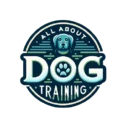Mastering Advanced Techniques for Outstanding Dog Training
Introduction to Advanced Dog Training
Dog training is the application of behavior analysis which reduces the environmental and situational factors to modify a dog’s behavior, either to assist it in performing specific chores or take on responsibilities in modern domestic life. While dogs have become an integral part of our families, they need guidance and learning to respond appropriately to cues and commands, perform tasks, and behave within different environments. This is where advanced dog training comes in.
Advanced dog training prepares dogs to understand and perform more complex commands and tasks. Once a dog knows basic obedience skills and has mastered necessary behavioral etiquette, they’re ready for advanced training. Advanced dog training covers complex tasks such as stay, recall, heel, fetch, and many other specialized tasks and tricks. Training a dog not only involves teaching commands but also nurturing a bond of understanding, trust, and mutual respect between you and your dog.
Advantages of Advanced Dog Training
Advanced dog training provides numerous benefits.
Built upon Basic Skills
The primary purpose of advanced dog training is to extend a dog’s existing skill sets. Once the basics are covered, advanced training goes a step further, teaching dogs to respond to more complex commands.
Enhances Dog's Mental Activity
Advanced training keeps a dog mentally stimulated. Just like humans, dogs need mental activities alongside physical training. Advanced training involves problem-solving exercises, keeping your dog mentally engaged and mentally fit.
Promotes Safety and Responsiveness
Dogs that undergo advanced training are more adept as they react swiftly and accurately to unpredictable situations. For instance, if your dog manages to squeeze through the gate and run towards a busy street, a well-trained recall command can save them from an unfortunate accident.
Strengthened Bond
Advanced training nurtures a deeper bond between the owner and the dog. Through positive reinforcement techniques, dogs learn to trust and respect their owners, fostering a relationship of mutual understanding and love.
Components of Advanced Dog Training
Complex Commands
In advanced training, the complexity of commands is elevated. Dogs are taught tasks like ‘fetch the ball,’ ‘find the toy,’ ‘open the door,’ among others. These commands demand mental activity in concert with physical activity, honing your dog’s overall cognitive abilities.
Excellence in Obedience
The second key aspect of advanced dog training is excellence in obedience. This comprises refining previous commands and tricks to a level of perfection. The criteria for success is often set higher, and more precise cues and feedback are used.
Specialized Training
Certain dog breeds infer specific working roles due to their innate skills – for instance, hunting, herding, or rescue. Advanced dog training often focuses on executing complex tasks relevant to these roles.
Essential Techniques in Advanced Dog Training
There are several techniques to consider when training your dog.
Positive Reinforcement
This is the most widely accepted and effectively proven dog training method. The idea is to reward behavior you like and ignore or redirect behavior you don’t like. The reward can be a treat, toy, praise, or any activity your dog enjoys.
Dominance Theory
The name can be deceiving, as this theory does not suggest positioning the master as a ‘dominator.’ Instead, it emphasizes creating a relationship of mutual respect, wherein the dog acknowledges its owner’s leadership.
Negative Punishment
Negative punishment involves taking away something the dog likes to discourage undesirable behavior. For instance, denying playtime if the dog starts to bite or chew excessively.
Clicker Training
Clicker training associates the sound of a clicker with a positive outcome, such as a treat or praise. Over time, the dog learns to associate the sound of the clicker with good behavior.
Frequently Asked Questions (FAQs)
When should I start advanced dog training?
It’s best to begin advanced training once your dog has mastered basic obedience commands like ‘sit,’ ‘stay,’ ‘come,’ and ‘leave it.’ The exact timing can vary based on the individual dog’s pace of learning.
Can all dogs undergo advanced dog training?
Absolutely! All dogs can benefit from advanced dog training. Remember, advanced training is not just about the commands but also about enhancing your relationship with your pet.
What if my dog is aggressive?
For aggressive dogs, it’s vital to consult with a professional dog trainer. Aggression can’t be solved through conventional training methods and requires specialized approaches to ensure safety and effectiveness.
Conclusion
Advanced dog training is a crucial step, yet a challenging one. It’s not only about mastery of skills but nurturing overall cognitive abilities and enriching the bond between the pet parent and the dog. With patience, understanding, and appropriate techniques, advanced dog training can greatly enhance your dog’s mental and physical ability while fostering a stronger bond with your dog.





